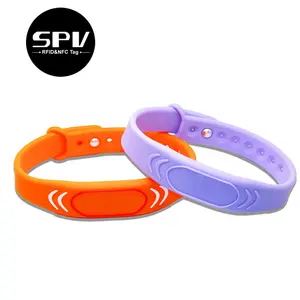Understanding RFID Kinds: An Overview
Radio Frequency Identification (RFID) technology has revolutionized the way industries manage their inventory and assets. RFID kinds refer to various types of RFID systems and tags, each designed for specific applications and industries. They utilize electromagnetic fields to automatically identify and track tags attached to objects. This technology is increasingly being adopted in numerous sectors such as retail, logistics, healthcare, and more due to its efficiency and accuracy.
Types of RFID Kinds
RFID kinds can be classified into several categories based on their operational frequency and tag types. Each type serves unique functions, making them suitable for varying applications.
- Low Frequency (LF) RFID:
- Operating frequency of 125 kHz to 134 kHz
- Short reading range (up to 10 cm)
- Commonly used in animal tracking and access control systems
- High Frequency (HF) RFID:
- Operating frequency of 13.56 MHz
- Reading range of up to 1 meter
- Used for smart cards, ticketing, and library systems
- Ultra High Frequency (UHF) RFID:
- Operating frequency between 300 MHz to 3 GHz
- Reading range of up to 12 meters
- Ideal for inventory tracking and supply chain applications
- Active RFID:
- Contains a battery for power
- Can transmit signals over long distances (up to 100 meters)
- Used in asset tracking and real-time location systems
- Passive RFID:
- No internal power source; activated by the reader's signals
- More common and cost-effective solution
- Suitable for retail and logistics applications
Functions and Features of RFID Kinds
The various RFID kinds offer remarkable capabilities that set them apart in the realm of data management and tracking. Understanding these functions and features can help businesses leverage this technology to its fullest potential.
- Automatic Identification:
- RFID systems can effortlessly identify items without direct line-of-sight, enhancing operational efficiency.
- This eliminates the need for manual encoding or scanning, reducing workforce costs.
- Data Storage and Transfer:
- RFID tags can store varied data types, from product details to shipment history.
- Information is transmitted in real-time, ensuring up-to-date tracking of assets.
- Durability:
- Many RFID tags are designed to withstand harsh environments, making them suitable for outdoor applications.
- Tags resistant to water, chemicals, and extreme temperatures enhance longevity and reliability.
- Scalability:
- RFID systems can be easily scaled to accommodate growing business needs.
- Integration with existing enterprise systems is straightforward, facilitating seamless operations.
Applications of RFID Kinds
RFID kinds have a plethora of applications across various industries, enabling organizations to streamline processes, enhance security, and improve inventory management.
- Retail Sector:
- RFID tags are used for inventory tracking, reducing shrinkage, and enhancing supply chain efficiency.
- Helps in improving customer experience through faster checkout processes.
- Healthcare:
- RFID kinds facilitate tracking of medical equipment and managing pharmaceuticals.
- Ensures patient safety and compliance with medical protocols through effective care management.
- Logistics and Supply Chain:
- Used for real-time tracking of packages, ensuring transparency and reducing delivery times.
- Enhances asset management, monitoring the movement of goods from manufacturers to retailers.
- Manufacturing:
- Enhances production line efficiency by monitoring work-in-progress and inventory levels.
- Facilitates automation of compliance and quality control processes.









































